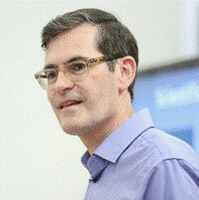August 2021: Chickens, Carpets, and Communications
In this edition:
- Can You Avoid PFAS in Makeup?
- Could There be PFAS in Your Carpet? What Can You Do?
- Protective Public Health Goals for PFOA and PFOS
- UP Scorecard: A New Tool for Evaluating Food Packaging
- Welcome to Our New Staff
- CALENDAR
I’m just back from a working vacation in Kauai, where I especially enjoyed walking on the beach and the heavy tropical rain. I also befriended some of the island’s infamous chickens, who clucked and crowed in the background of my Zoom meetings.
Our Institute is making good progress toward our goal of sharing our successful communications strategy with other scientists. A column last week in Nature by our Science Communications Officer Rebecca Fuoco detailed our media strategy for increasing the impact of research. ‐ Please share this article with scientists you know who would like their research to have greater impact.
Our strategy contributed to the widespread media attention received by our June paper on PFAS in cosmetics, the bipartisan introduction of the No PFAS in Cosmetics Acts in both the House and Senate, and commitments to eliminate PFAS by beauty companies (including Sephora’s “Clean at Sephora” program).
Effective science communication is also important for community audiences. The first annual #PFASComm event, a training and competitionfor early-career PFAS researchers interested in communicating and partnering with communities, was a great success. The event followed on from our October Interactive Workshop on PFAS. Congratulations to winners Chrissy Crute (Duke University), Anna Boatman (NC State), and Kaylie Kirkwood (NC State), and special thanks to the judges from PFAS-impacted communities and the speakers. You can listen to recordings from the training and the competition.
In concerning pet news, Public Employees for Environmental Responsibility found PFAS in popular flea-control products for dogs and cats, posing a risk to both pets, owners, and the environment. The group says the EPA’s lax pesticide regulation and transparency issues are at fault. This lack of transparency is indeed a common theme for PFAS. That’s why we wrote an op-ed for The Hill in support of PFAS disclosure requirements and stopping the use of this entire class of chemicals in consumer products.
In a related op-ed in The Hill, our colleague Linda Birnbaum argues the EPA must protect public health by regulating PFAS as a class. According to federal Toxic Substances Control Act, the EPA can define all existing PFAS chemicals, including byproducts and transformation products, as a “category” and restrict or ban their uses if the category is determined to pose an unreasonable risk of injury to health or the environment.
Knowing about this pathway for the EPA to stop the manufacture of products containing PFAS could encourage product manufactures to start replacing the PFAS.
We wish you a healthy and happy summer,
Arlene and the Green Science Policy team
Can You Avoid PFAS in Makeup?
by Amit Rosner and Seth Rojello Fernández
The Institute's recent study with Notre Dame and Indiana Universities finding indicators of potentially harmful PFAS in more than half of makeup products tested—most of it unlabeled—received widespread media attention. Now makeup wearers across North America are asking us: How can I avoid PFAS in my cosmetics?
We try to answer this complicated question in this blog post:
(1) Use tools like Clearya to avoid labeled PFAS. The study found that PFAS use in cosmetics is often unlabeled, but some products do include them on the label. Clearya is a free browser plug-in and mobile app that works automatically while consumers are shopping online and notifies the user of unsafe chemicals it detects on labels, including PFAS. Other tools such as the Institute’s PFAS-Free List and EWG’s Skin Deep are also helpful.
(2) Support the No PFAS in Cosmetics Act. The bipartisan No PFAS in Cosmetics Act introduced in the House and Senate would ban all PFAS from makeup and other personal care products. Breast Cancer Action has a simple form so you can ask your representatives to support these important bills.
(3) Ask your favorite brands for PFAS-free products. You can ask your favorite beauty brands to publicly commit to not using PFAS by tweeting or emailing them (look for a “Contact Us” page on their website).
Could There be PFAS in Your Carpet? What Can You Do?
By Jonas LaPier
The good news is that as of 2020 most new US carpets and rugs are free of PFAS treatments. The bad news is that if you have an older carpet, it could be treated with these potentially toxic forever chemicals. Even those with eco-labels such as Green Label Plus may contain PFAS. What can you do to reduce harm if removing and replacing the carpet is not an option for you?
Reducing household dust is the best way to minimize your family’s (and your pets’) PFAS exposure. We recommend frequent and thorough vacuuming of all carpets and other flooring as well as wet mopping and wet dusting of surfaces. This will also reduce your exposure to flame retardants, lead and other harmful chemicals. A vacuum with a HEPA filter and a mechanical power head (think a spinning brush) is most effective.
Thorough hand washing is especially important before eating, after cleaning, and for children after playing on the floor. Placing a playmat or rug over PFAS treated carpet may also help.
Avoiding products containing PFAS--often advertised as high performance, stain or water proof--will also help reduce your overall exposure. You can check out our PFAS-Free Page for lists of safer products without any PFAS.
Protective Public Health Goals for PFOA and PFOS
By Tom Bruton
Scientists’ estimate of what counts as a safe level of PFAS in drinking water continues to drop. Last week California’s Office of Environmental Health Hazard Assessment released proposed Public Health Goals for PFOA and PFOS of 0.007 and 1 part per trillion, respectively. The proposed level for PFOA is 14 times lower than what the same agency proposed as a Notification Level in 2019 and 10,000 times lower than U.S. EPA’s lifetime health advisory of 70 parts per trillion.
Once finalized, California will use the new Public Health Goals (as well as cost and feasibility considerations) as a basis for establishing enforceable drinking water regulations. It’s still anyone’s guess as to where the final drinking water regulations will land, but OEHHA deserves credit for proposing such health protective goals.
OEHHA’s timing is good. U.S. EPA is expected to propose new limits for PFOA and PFOS in drinking water in the next few years, and the new Public Health Goals from California should push the agency to develop federal standards that are similarly health protective.
UP Scorecard: A New Tool for Evaluating Food Packaging
By Anna Soehl
Harmful additives in food contact materials can contaminate food or beverages as well as release problematic chemicals during production or at the end of product's life (i.e., composting, recycling, or incineration). However, selecting products that are free of harmful chemical is challenging due to lack of transparency and regulation. Marketing claims further muddy the waters.
For example, just because food packaging is labeled as compostable or free of certain substances (e.g., BPA, PFOA) does not mean that it is free of other toxics. The UP Scorecard, developed by a collaboration among food service companies, environmental NGOs and technical experts, can help. UP Scorecard systematically considers chemicals of concern together with other sustainability criteria. In order to solicit stakeholder feedback (link), the beta version of UP Scorecard has been recently released.
You are invited to visit the UP Scorecard website hosted by the Food Packaging Forum and register to join a virtual introduction event on August 19th at 9am Pacific.
Welcome to Our New Staff

Brandon Brown
Brandon R. Brown joins the Institute as Deputy Director for at least the next year after many years as a Professor, Chair, and Associate Dean for Sciences at the University of San Francisco. His research work has spanned superconductivity, sensory biophysics, and science history, including two books, Planck (2015) and The Apollo Chronicles (2019).

Jonas LaPier
Jonas is the newest member of our team and for the next year will be supporting many of our ongoing projects reducing chemical harm. He graduated this spring from Harvard College with a B.S. in Environmental Science and Engineering and a minor in Environmental Science and Public Policy. His senior design project focused on modeling heavy metal contamination in United States well water. Jonas plans to pursue a Ph.D. next year in the field of environmental health. He especially enjoys riding bikes and attempting to surf.
CALENDAR
October 2-3, 2021: 37th Annual Berkeley Himalayan Fair
Enjoy the food, music, dance, crafts and arts of the Himalayas. Profits go to Himalayan charities.
Where: Live Oak Park, 1300 Shattuck Avenue at Berryman, North Berkeley. More info is here.
October 3-7, 2021: FLUOROS Global 2021: International Perspectives on PFAS
This multidisciplinary international conference is back in a hybrid (in-person and virtual) format. The meeting will cover the latest developments and scientific advances on PFAS and their adverse health impacts for humans and the environment. Learn more here. We are planning a science & policy of PFAS workshop in conjunction with FLUOROS on Sunday, Oct. 3rd.
Email [email protected] to learn more and/or participate.
Receive Updates By Email
Subscribe to our monthly newsletter and get these updates delivered right to your inbox!





